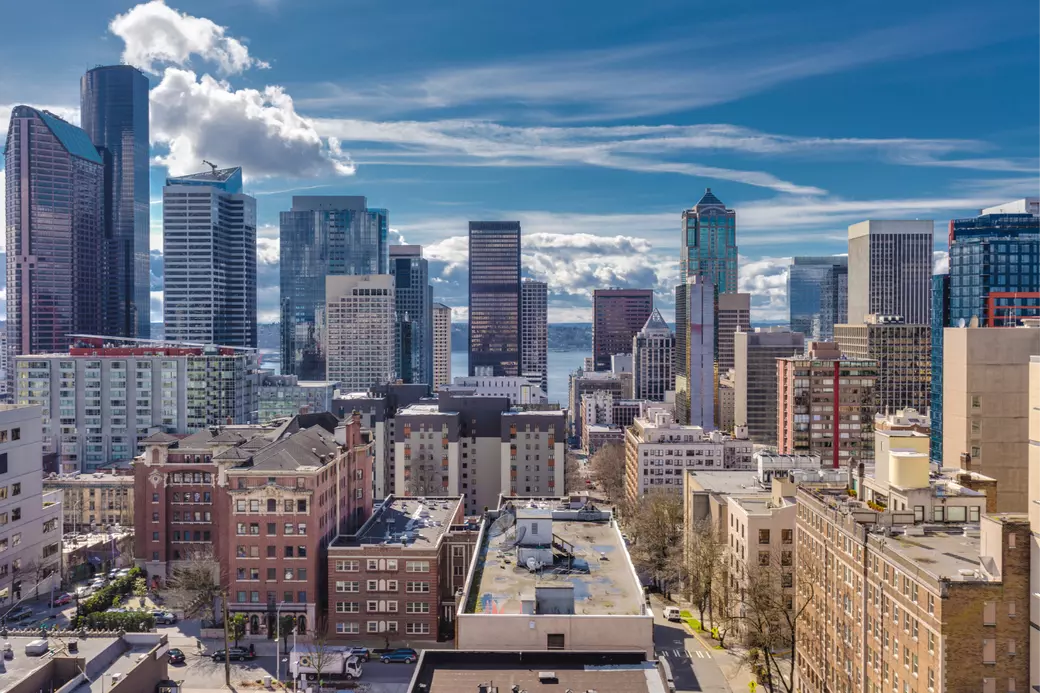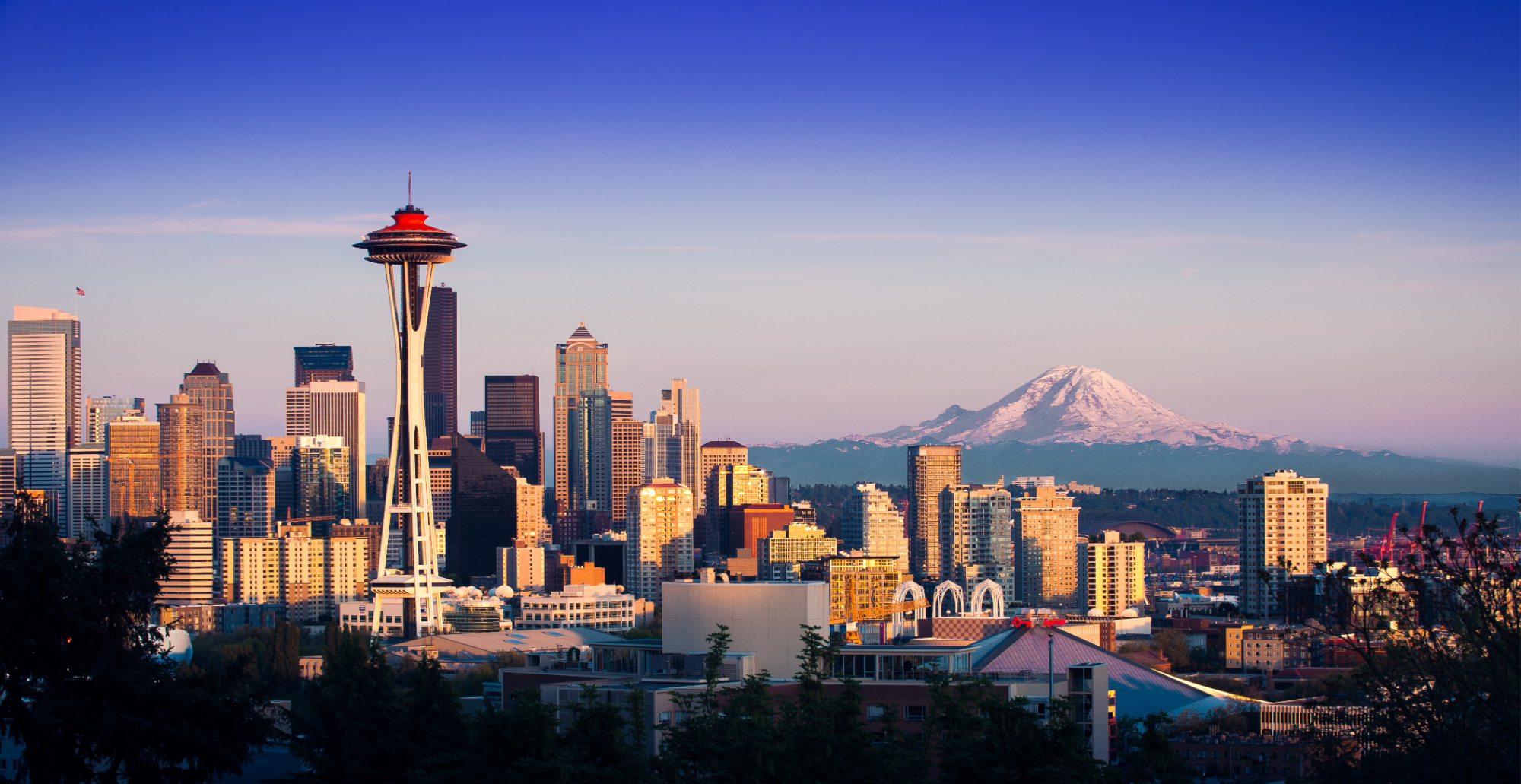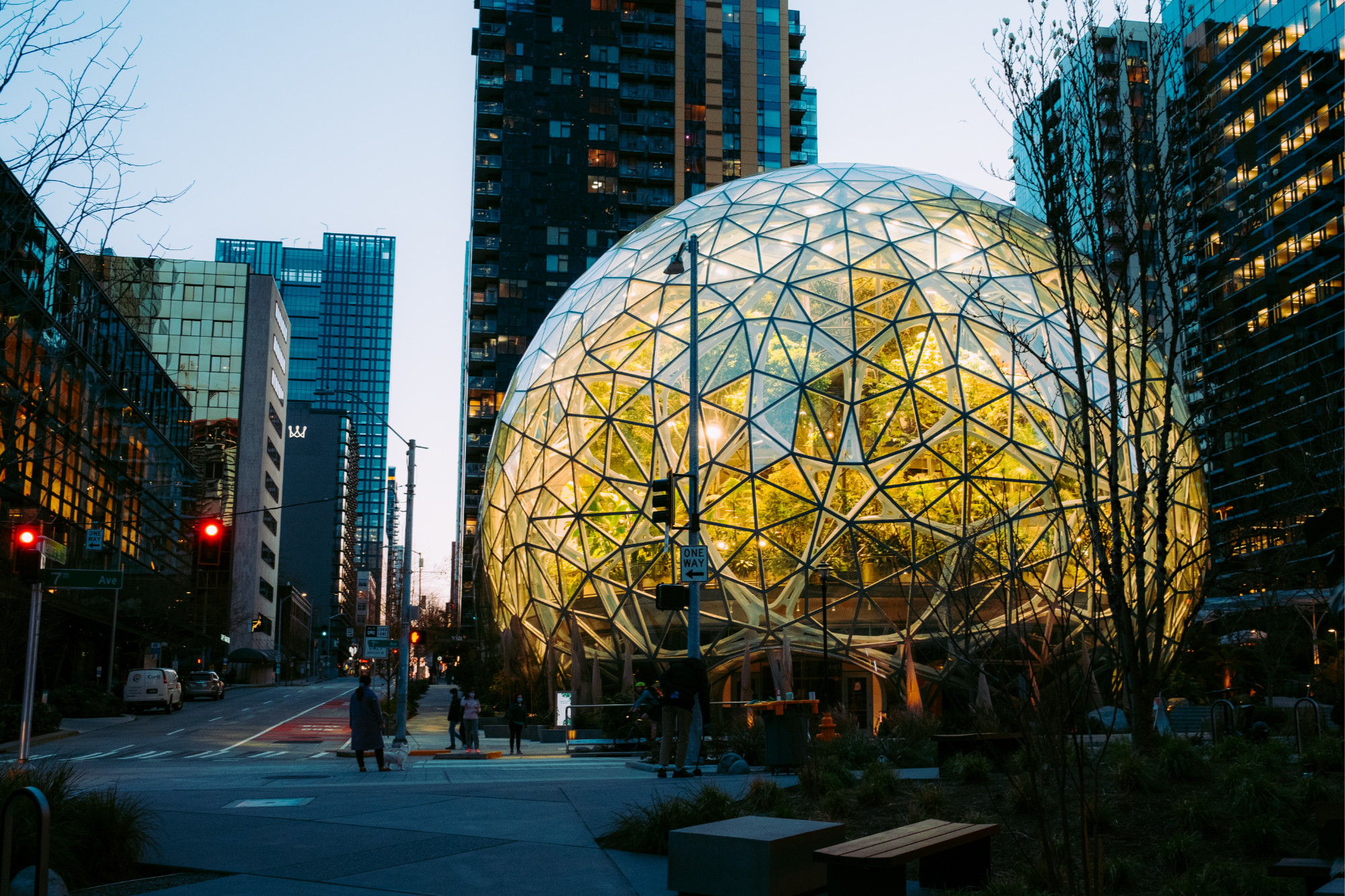Seattle's recovery compared to other cities

Cities were once described with negative terms such as "fiscal doom loop," "transit death spiral," and "office apocalypse" due to the COVID-19 pandemic's impact.
However, recent research shows that this trend is reversing as residential neighborhoods are thriving while downtowns struggle. Newly released data from the Urban Displacement Project, a unique research initiative at the University of California, Berkeley, and the University of Toronto, reveals that Seattle's downtown only saw 48% of pre-pandemic activity levels this winter. Unlike most research studies that measured the vitality of urban centers during the pandemic, this study took a fresh approach by analyzing smartphone data.
The study analyzed 18 million visits to various downtown points of interest, including restaurants, retail shops, and grocery stores, to compare current activity levels to pre-pandemic ones. Out of the 63 downtowns in the U.S. and Canada included in the study, Seattle ranked 51st, with only 14 downtowns experiencing less than half of their pre-pandemic activity levels. The most recent data analyzed covers December 2022 through February of this year.

Seattle's downtown activity this winter showed a slight improvement from the previous year, but still fell short at only 44% of pre-pandemic levels. This can be attributed to a lack of employees returning to downtown and the persistence of remote work. However, recent news of Amazon workers being required to return to the office three days a week could positively impact future data releases.
In comparison to other midsized cities, Salt Lake City took the lead with cellphone activity at 139% of pre-pandemic levels, while major cities like San Diego and New York showed faster recovery rates than Seattle. San Francisco and Portland, on the other hand, had much lower levels of activity at 32% and 40%, respectively.
Seattle's best performance was in the spring of 2022 at 52%, while the worst was in the summer of 2020 at only 37%. Despite lagging behind some cities, Seattle's slight improvement is a glimmer of hope for the future.


Final Thought
People now prefer walkable and mixed-use neighborhoods where they can live and work instead of the traditional separation of work zones from other activities. The benefits of this shift include increased retail performance and transit ridership in many neighborhoods.
However, this demand has caused a housing crisis in many cities, including Seattle where affordability is a significant concern. The solutions for both neighborhood affordability and downtown revitalization are the same: ending policies and infrastructure that segregate people and most types of land use and create under-resourced neighborhoods and downtowns reliant on offices.
Progress will also require building housing everywhere, including affordable housing, transitional, and permanent supportive options. The most effective policies to create shared prosperity for neighborhoods and downtowns will raise and share new revenue by explicitly connecting growth with funding to connect historically marginalized communities and places to the regional economy.
Cities must enable new models for commercial real estate ownership that are accessible for local entrepreneurs and focus on community-based organizations and parks. The future city needs to be accessible to more people, finding common ground, earning community trust, and establishing new ways to work together to build something that lasts.
For any questions, please reach out to one of our team members at WAHOUSES.
Categories
Recent Posts










GET MORE INFORMATION

